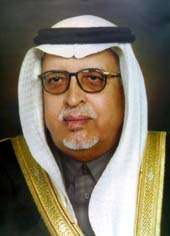Abdulrahman al-Ansary
Abdulrahman al-Ansary (A.R. al-Ansary, Abdul-Rahman al-Ansary; Arabic: عبدالرحمن بن محمد الطيب الأنصاري) is a former professor of archeology at King Saud University and member of the first and second terms of the Consultative Assembly of Saudi Arabia. Professor al-Ansary is the founder of the rediscovery of archeological site of Qaryat al-Fau.[1][2]
Abdulrahman al-Ansary عبدالرحمن بن محمد الطيب الأنصاري | |
|---|---|
 | |
| Born | October 10, 1935 Medina, Saudi Arabia |
| Citizenship | Saudi Arabian |
| Alma mater | University of Leeds, Cairo University |
| Scientific career | |
| Fields | Archeology, History |
| Doctoral advisor | Benedikt Isserlin |
Education
Professor al-Ansary earned a bachelor's degree in Arabic language and literature from Cairo University in 1960 and a Doctor of Philosophy degree from the department of Semitic Studies of the University of Leeds in 1966. During his doctoral studies, he focused on the comparative study of Lihynite personal names and trained at archeological excavations with his thesis supervisor at Durham University and Motya, Sicily,[3] and with Professor Kathleen Kenyon in Jerusalem in 1966.[4]
Career
Professor al-Ansary was a faculty member of King Saud University (formerly Riyadh University) from 1966 to 1999 where he held several positions and roles[5] including dean of the College of Arts (1971–1972 and 1988–1994),[6] chairman of the Department of History (1974–1978) and chairman of the Department of Archeology and Museology (1978–1986). Between 1996 and 2001, he served as a member of the Consultative Assembly of Saudi Arabia, which were its first two terms.
Professor al-Ansary is considered the pioneering academic who established the study of archeology in Saudi Arabia by taking the leading role in creating an archeology concentration in the Department of History at King Saud University and later the Department of Archeology and Museology in 1978, the first in the country.[7] Professor al-Ansary is perhaps most known for leading the archeological excavation in the city of Qaryat al-Fau between 1972 and 1995 while at King Saud University.[5] In 1982 he authored a book entitled "Qaryat al-Fau: A Portrait of Pre-Islamic Civilisation in Saudi Arabia",[1] which presented the results of the first six seasons of excavation.
References
- al-Ansary, A.R. Qaryat al-Fau: A Portrait of Pre-Islamic Civilisation in Saudi Arabia. Riyadh University Press. 1982.
- Trade Routes Resources Blog. The ancient city of Gerha = Qariyat Al-Fau. February 17, 1999.
- Motya: a Phoenician and Carthaginian city in Sicily. Isserlin, B. S. J. and Taylor, Joan du Plat. Volume 1. Brill Academic Publishers. 1997.
- Tushingham, AD. Excavations in Jerusalem, 1961-1967. Royal Ontario Museum. 1985.
- Adumatu Journal Website Archived March 8, 2009, at the Wayback Machine
- Deans of the College of Arts, King Saud University Archived October 3, 2009, at the Wayback Machine
- Mandaville, J. The New Historians. Aramco World Magazine. Volume 3, number 2. 1980.